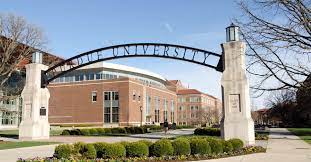The Purdue Engineering Acceptance Rate: Your Path to Success
Understanding acceptance rates is crucial for prospective engineering students, especially when considering Purdue University’s renowned engineering program. This article aims to provide valuable insights into the Purdue Engineering acceptance rate, factors influencing it, and strategies to improve your chances of acceptance.
Purdue Engineering Acceptance Rate

What is the acceptance rate?
The acceptance rate refers to the percentage of applicants who are admitted into a particular college or program. It is an important metric that reflects the competitiveness of the admissions process and helps prospective students assess their chances of acceptance.
Purdue Engineering acceptance rate overview
Purdue University’s engineering program is highly esteemed and attracts a large number of applicants each year. As of [current year], the acceptance rate for Purdue Engineering is [acceptance rate]. While this rate may vary slightly from year to year, it indicates the competitiveness of the program.
Factors Affecting Purdue Engineering’s Acceptance Rate
Several factors influence the acceptance rate for Purdue Engineering:
Academic requirements and prerequisites:
Purdue Engineering has rigorous academic standards, including specific course prerequisites and GPA requirements. Prospective students must meet these requirements to be considered for acceptance.
Competition among applicants:
Due to Purdue’s reputation and the quality of its engineering program, the competition for acceptance is high. The university receives a large number of applications from highly qualified students, making the admissions process extremely competitive.
Extracurricular activities and achievements:
Purdue values well-rounded students who demonstrate a strong commitment to engineering. Involvement in engineering-related extracurricular activities, leadership roles, and notable achievements can significantly enhance an applicant’s chances of acceptance.
Diversity and inclusion initiatives:
Purdue University is committed to promoting diversity and inclusion within its engineering program. The university considers applicants from a wide range of backgrounds and experiences, aiming to create a diverse and inclusive learning environment.
Demystifying the acceptance rate statistics
It’s important to analyze acceptance rate statistics in a more nuanced manner:
Historical trends and variations:
Acceptance rates can vary from year to year due to changes in application volume, program capacity, and other factors. Analyzing historical trends can provide insights into the competitiveness of the program.
Acceptance rate by engineering discipline:
Different engineering majors within Purdue may have varying acceptance rates. Some disciplines may be more competitive or have limited capacity, affecting the acceptance rate for those specific majors.
Significance of acceptance rate for specific majors:
Prospective students should consider the acceptance rate for their intended engineering major. Some majors may have higher acceptance rates due to industry demand or program capacity, while others may be more competitive.
Strategies for Improving Your Chances
Academic preparation plays a crucial role in improving your chances of acceptance into Purdue Engineering:
Recommended high school coursework:
Take challenging math and science courses, including calculus, physics, and chemistry, to demonstrate your readiness for engineering studies.
Importance of strong grades and GPA:
Maintain a high GPA throughout high school, as it is a significant factor in the admissions process. Aim for a GPA that meets or exceeds the average GPA of admitted students.
Standardized test scores (SAT/ACT):
Prepare for and take the SAT or ACT exams, as they are often considered in the admissions process. Aim for scores that align with or exceed the average scores of admitted students.
Highlighting extracurricular activities
Extracurricular activities can greatly enhance your application and demonstrate your passion for engineering. Consider the following:
Identifying relevant engineering-related extracurriculars:
Join clubs or organizations that focus on engineering, such as robotics teams, science fairs, or coding clubs. These activities showcase your interest and involvement in the field.
Showcasing leadership roles and responsibilities:
Seek leadership positions within your extracurricular activities to demonstrate your ability to take initiative, collaborate, and inspire others.
Demonstrating passion and commitment through involvement:
Engage in projects, competitions, or research related to engineering. This involvement highlights your dedication, problem-solving skills, and ability to apply engineering principles to real-world scenarios.
Crafting a compelling application
Your application should effectively showcase your strengths and experiences in engineering. Consider the following strategies:
Writing a strong personal statement or essay:
Use this opportunity to convey your passion for engineering, discuss relevant experiences, and explain how Purdue’s engineering program aligns with your goals.
Showcasing engineering-related experiences and projects:
Highlight any internships, research experiences, or engineering projects you have participated in. Discuss the skills you acquired and the impact these experiences had on your personal and academic growth.
Obtaining impactful recommendation letters:
Request recommendation letters from teachers, mentors, or supervisors who can speak to your abilities, work ethic, and potential for success in the field of engineering. Choose individuals who can provide specific examples and insights into your strengths.
Frequently Asked Questions
What is the average GPA required for Purdue Engineering acceptance?
The average GPA required for Purdue Engineering acceptance varies each year. However, it is generally recommended to aim for a GPA that meets or exceeds the average GPA of admitted students. This demonstrates your academic preparedness and ability to excel in the program.
How do SAT/ACT scores impact acceptance?
SAT/ACT scores are considered in the admissions process for Purdue Engineering. While there is no specific cutoff, it is beneficial to aim for scores that align with or exceed the average scores of admitted students. Strong test scores can demonstrate your aptitude for the academic rigor of the program.
Can I transfer to Purdue Engineering?
Yes, it is possible to transfer to Purdue Engineering from another institution. However, transfer admission is competitive and based on several factors, including your academic performance at your current institution, completion of prerequisite courses, and available space within the program. It is important to review Purdue’s transfer admission requirements and guidelines for specific information.
What majors within Purdue Engineering have the highest acceptance rates?
Acceptance rates can vary among the different engineering majors at Purdue. Some majors may have higher acceptance rates due to various factors, such as program capacity or industry demand. It is recommended to research the specific acceptance rates for the majors you are interested in to gain a better understanding of their competitiveness.
Are there any special programs or initiatives that can improve my chances?
Purdue Engineering offers various special programs, scholarships, and initiatives to enhance the acceptance rate prospects of prospective students. These programs may include early admission options, honors programs, diversity scholarships, and research opportunities. Research and explore these programs to determine if you are eligible and how they align with your goals and interests.
Conclusion
As you embark on your quest to join the esteemed ranks of Purdue University’s College of Engineering, you are armed with the knowledge and insights needed to navigate the competitive admissions landscape. While the Purdue Engineering acceptance rate reflects the program’s popularity and prestige, remember that it is just the first step in your journey toward engineering excellence.



